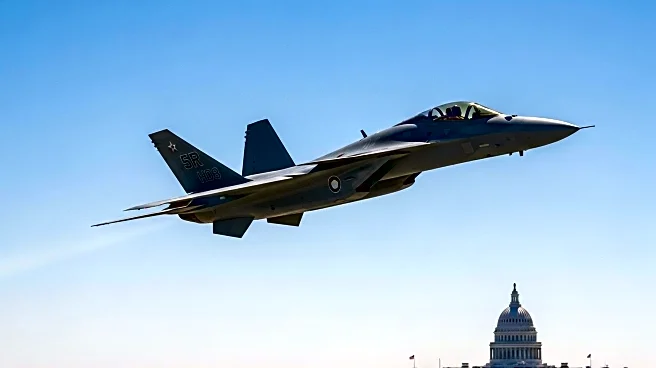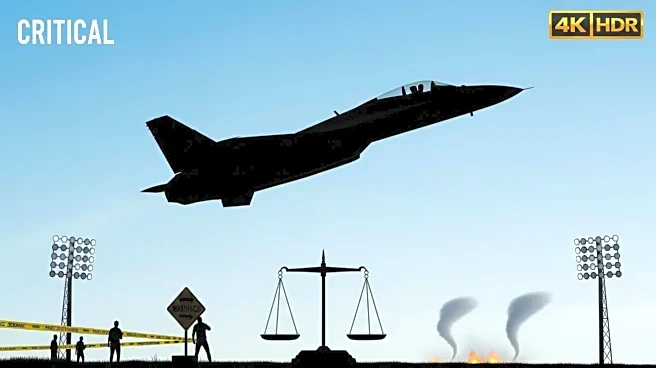What is the story about?
What's Happening?
The U.S. Senate has passed a $914 billion defense policy bill for fiscal year 2026, overcoming a month-long gridlock on amendments. The bill, known as the National Defense Authorization Act (NDAA), was approved with a 77-20 vote, showcasing bipartisan support. The passage allows the House and Senate Armed Services Committees to begin the conference process to reconcile differences between their respective versions. Key amendments debated included restrictions on modifying foreign aircraft, which was ultimately rejected, and measures to enhance the Defense Department's authority to address drone threats over military installations. The bill also extends the prohibition on retiring B-1 bombers until the end of fiscal year 2030.
Why It's Important?
The approval of the NDAA is crucial for setting defense priorities and funding allocations for the upcoming fiscal year. It impacts various stakeholders, including military personnel, defense contractors, and national security agencies. The bill's passage ensures continued support for military operations and strategic initiatives, such as drone threat mitigation and aircraft modernization. The extension of the B-1 bomber retirement prohibition addresses concerns about maintaining air capabilities until new systems are deployed. The bipartisan nature of the vote reflects a shared commitment to national defense, despite differing views on specific amendments.
What's Next?
As the bill moves to the conference stage, lawmakers will work to finalize language on acquisition reform, a legislative priority for both the House and Senate Armed Services Committees. They will also address the $32 billion difference between the Senate's version and the Pentagon's budget request. The outcome of these discussions could influence future defense spending debates, particularly regarding the higher defense topline supported by the Senate Appropriations Committee. Stakeholders, including defense contractors and military leaders, will closely monitor these developments to assess potential impacts on defense projects and funding allocations.
AI Generated Content
Do you find this article useful?














